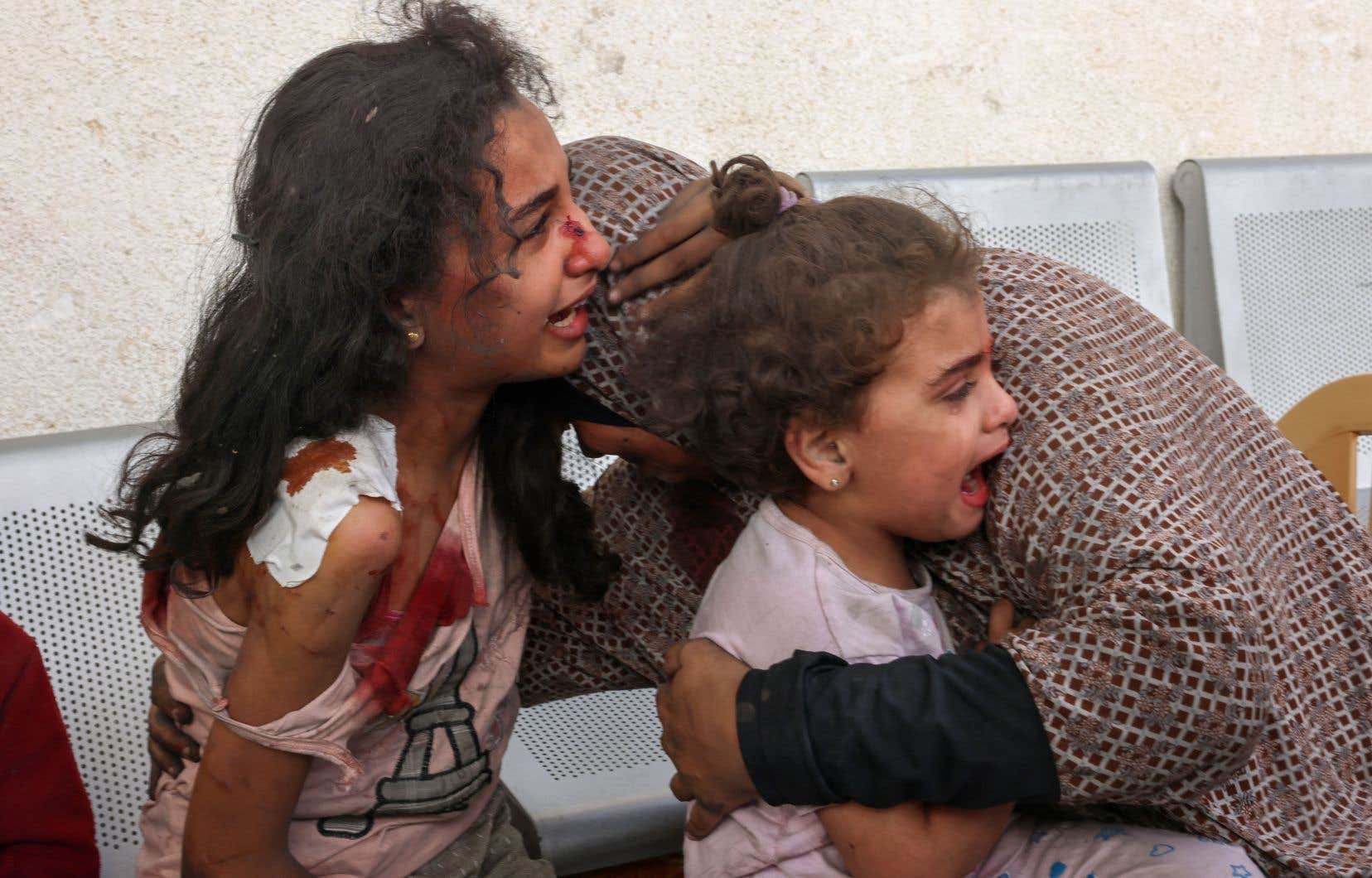Amid incessant bombardments, population displacement and lack of resources, children in the Gaza Strip are among the most vulnerable individuals in the small territory facing the Israeli response following the Hamas attack on October 7 last year. This response against Palestinians in Gaza puts their future at stake, according to an expert interviewed by The duty.
In the Gaza Strip, approximately 40% of the population is under 15 years old. In total, more than 3,700 people have already been killed by Israeli strikes in 12 days. Nearly half (1,574) of those killed were children, according to Palestinian authorities.
Between 2000 and 2022, according to data from the Israeli NGO B’Tselem — which campaigns for the rights of Palestinians in Israel and the occupied territories — more than 2,200 minors would have lost their lives to bullets and bombings. the Israeli army. The toll is likely to rise significantly this year.
War affects children psychologically, physically and socially, explains Duty Olivier Arvisais, professor in the Department of Didactics of the Faculty of Educational Sciences at the University of Quebec in Montreal (UQAM). In addition to the physical injuries and psychological trauma that can emerge in the child, “there are all aspects linked to insecurity that can affect the emotional and cognitive development of children.”
A particular situation in Gaza
Children in the Gaza Strip face a particular situation due to the frequent cycles of violence that continue, particularly since the blockade imposed by Israel on the territory since 2007, but not only that. ” It makes [plus de] 70 years since Palestinians, in general, have been involved in conflict with Israel. One of the particularities that really affects Palestinian children, and Gazan children in particular, is intergenerational trauma,” recalls Mr. Arvisais, joined in Switzerland.
The trauma experienced by Palestinian parents or grandparents earlier in their lives carries over to their children and will impact future generations. In Gaza, however, “the cycle is so rapid now that it goes a little beyond this idea of intergenerational trauma. Children will already be traumatized several times in their lives and even in the crucial years of their development, between the ages of 0 and 10, underlines the researcher.
We also note that cases of post-traumatic stress disorder (PTSD), numerous among children in the territory, stand out from those noted in other conflict zones. “Among children in Gaza, [le TSPT] often reaches levels of complexity not seen much elsewhere. […] This is also a particularity of conflicts where there is intensity and frequent recurrence. »
A study carried out among 1029 young people aged 11 to 17 in Gaza by British researchers, published in 2020 in the journal Front Psychiatry, indicates that the majority of children questioned experienced a form of psychological trauma themselves (88.4%), witnessed a form of trauma on another person (83.7%) or witnessed the destruction of residences and infrastructure (88.3%). A little more than half of the children (53.5%) had a diagnosis of PTSD, and these diagnoses were more numerous among children who had suffered the three forms of traumatic shock studied.
The consequences of such trauma are multiple, points out Olivier Arvisais. In the long term, these children may fall more easily into situations of exploitation and abuse (such as child labor or recruitment by armed groups), see their situation of vulnerability and poverty worsen, but above all, they may develop coping mechanisms that, over time, will have deleterious effects on their development.
“It can lead to long-term emotional desensitization to violence,” notes the professor. This can lead children to develop risky behaviors as they grow up, such as drug use or violence. » The constant insecurity experienced by Gazan children also leads to a form of hypervigilance, adds the professor.
Resilience through learning
The current situation in the Gaza Strip, under Israeli siege and where humanitarian aid has only just been allowed to enter after more than a week, will have irreversible consequences on the minor population. “If, tomorrow morning, the current conflict stops, it will take years, even decades for Gaza to recover from its state of destruction,” observes Mr. Arvisais.
He is currently working on a research project focusing on the cognitive development and learning abilities of Palestinian children in schools in Gaza, in collaboration with UQAM, the Humanities and Social Sciences Research Council of Canada as well as the Gaza Community Mental Health Program, a local Palestinian NGO.
“The goal is to produce knowledge that will help teachers, psychologists and social workers to work better with children who live in these conditions,” describes Olivier Arvisais. This knowledge would allow actors on the ground to work by prioritizing the resilience and well-being of children, in order to preserve their ability to learn, and to “mitigate the negative effects on their cognitive development that violence and war have on them “.
According to him, the ability to learn is a key skill in children’s development. “It is probably one of the greatest resources that human beings have. If it is affected, we reduce a child’s chances of being able to meet their own needs, to satisfy their dreams, their ambitions, to develop, to contribute to the development of a positive society. »
If future generations in conflict zones, such as Gaza, have reduced learning capacity due to development problems, it is hopeless, according to Mr. Arvisais. “The solution for the Palestinians is future generations. If we do not seek strategies to mitigate the effects of conflict, there will never be this future generation who will be able to contribute to peace. »
